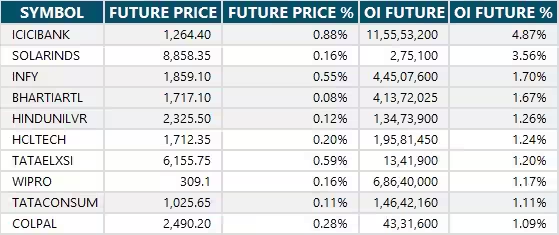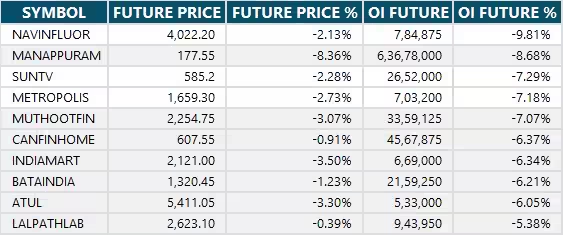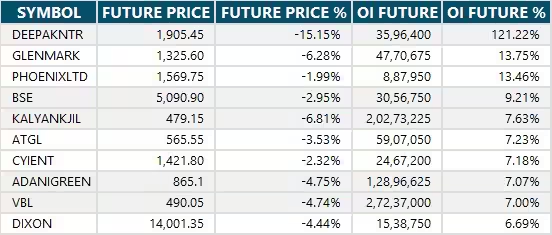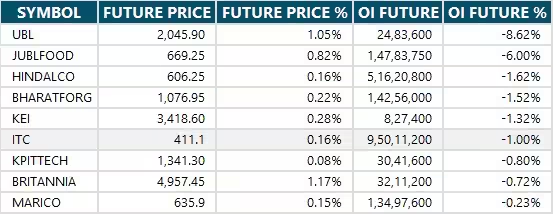17 Feb , 2025 By : Debdeep Gupta

The selling pressure has been sustained for the eighth consecutive session, with the Nifty 50 hitting a new low of 2025 on February 14, losing 102 points amid high volatility. Given the consistent downtrend, the index may attempt to bounce back, but the sustainability of the recovery will be key to watch, experts said. According to them, if the index rebounds, 23,250 can act as resistance, followed by 23,400 as the next hurdle. However, sustaining below 23,000 could open doors for 22,750, and then the 22,600 zone.
Here are 15 data points we have collated to help you spot profitable trades:
1) Key Levels For The Nifty 50 (22,929)
Resistance based on pivot points: 23,083, 23,168, and 23,305
Support based on pivot points: 22,809, 22,724, and 22,587
Special Formation: The Nifty 50 formed a bearish candlestick pattern with a lower shadow on the daily charts, while on the weekly scale, there was a long bearish candlestick formation. The index has sustained below all key moving averages (10, 20, 50, 100, and 200-day EMAs) as well as the lower band of Bollinger Bands, with a negative bias in momentum indicators and a lower top-lower bottom formation, signaling weakness.
2) Key Levels For The Bank Nifty (49,099)
Resistance based on pivot points: 49,471, 49,677, and 50,010
Support based on pivot points: 48,804, 48,598, and 48,264
Resistance based on Fibonacci retracement: 49,409, 50,381
Support based on Fibonacci retracement: 47,880, 46,078
Special Formation: The Bank Nifty also reported a bearish candlestick with a lower shadow on the daily timeframe and a long bearish candlestick on the weekly charts, indicating weakness. Furthermore, the index has entered the lower band of Bollinger Bands and is trading below all key moving averages on the daily charts, while exhibiting a lower top-lower bottom formation.
3) Nifty Call Options Data
According to the weekly options data, the 24,000 strike holds the maximum Call open interest (with 1.07 crore contracts). This level can act as a key resistance for the Nifty in the short term. It was followed by the 23,300 strike (74.5 lakh contracts) and the 23,500 strike (62.78 lakh contracts).
Maximum Call writing was observed at the 23,300 strike, which saw an addition of 50.38 lakh contracts, followed by the 23,900 and 23,800 strikes, which added 38.4 lakh and 31.32 lakh contracts, respectively. The maximum Call unwinding was seen at the 23,400 strike, which shed 3.72 lakh contracts.
4) Nifty Put Options Data
On the Put side, the maximum Put open interest was seen at the 22,000 strike (with 75.14 lakh contracts), which can act as a key support level for the Nifty. It was followed by the 22,500 strike (66.17 lakh contracts) and the 22,400 strike (36.74 lakh contracts).
The maximum Put writing was placed at the 22,500 strike, which saw an addition of 33.89 lakh contracts, followed by the 22,100 and 22,800 strikes, which added 19.32 lakh and 12.3 lakh contracts, respectively. The maximum Put unwinding was seen at the 23,100 strike, which shed 1 lakh contracts, followed by the 23,500 and 23,200 strikes, which shed 81,675 and 52,500 strikes, respectively.
5) Bank Nifty Call Options Data
According to the monthly options data, the maximum Call open interest was seen at the 51,000 strike, with 17.17 lakh contracts. This can act as a key resistance level for the index in the short term. It was followed by the 50,000 strike (14.47 lakh contracts) and the 50,500 strike (11.65 lakh contracts).
Maximum Call writing was visible at the 49,000 strike (with the addition of 2.38 lakh contracts), followed by the 50,500 strike (2.04 lakh contracts) and the 49,500 strike (1.51 lakh contracts). The maximum Call unwinding was seen at the 50,900 strike, which shed 22,410 contracts, followed by the 49,800 and 50,800 strikes, which shed 19,800 and 18,930 contracts, respectively.
6) Bank Nifty Put Options Data
On the Put side, the 49,000 strike holds the maximum Put open interest (with 12.81 lakh contracts), which can act as a key support level for the index. This was followed by the 48,000 strike (12.16 lakh contracts) and the 50,000 strike (8.45 lakh contracts).
The maximum Put writing was observed at the 48,800 strike (which added 87,300 contracts), followed by the 48,000 strike (60,000 contracts) and the 48,200 strike (38,580 contracts). The maximum Put unwinding was seen at the 50,000 strike, which shed 1.2 lakh contracts, followed by the 49,500 and 48,500 strikes which shed 1.09 lakh and 1 lakh contracts, respectively.
7) Funds Flow (Rs crore)

8) Put-Call Ratio
The Nifty Put-Call ratio (PCR), which indicates the mood of the market, dropped to 0.77 on February 14, against 0.9 in the previous session.
The increasing PCR, or being higher than 0.7 or surpassing 1, means traders are selling more Put options than Call options, which generally indicates the firming up of a bullish sentiment in the market. If the ratio falls below 0.7 or moves towards 0.5, then it indicates selling in Calls is higher than selling in Puts, reflecting a bearish mood in the market.
9) India VIX
The volatility index, India VIX, a measure of expected market volatility, remained on the higher side, surpassing the 15 mark at 15.02, up 0.4 percent on Friday. It continued its upward journey throughout the week, adding further discomfort for the bulls.
10) Long Build-up (14 Stocks)
A long build-up was seen in 14 stocks. An increase in open interest (OI) and price indicates a build-up of long positions.

11) Long Unwinding (85 Stocks)
85 stocks saw a decline in open interest (OI) along with a fall in price, indicating long unwinding.

12) Short Build-up (124 Stocks)
124 stocks saw an increase in OI along with a fall in price, indicating a build-up of short positions.

13) Short-Covering (9 Stocks)
9 stocks saw short-covering, meaning a decrease in OI, along with a price increase.

14) High Delivery Trades
Here are the stocks that saw a high share of delivery trades. A high share of delivery reflects investing (as opposed to trading) interest in a stock.

15) Stocks Under F&O Ban
Securities banned under the F&O segment include companies where derivative contracts cross 95 percent of the market-wide position limit.
Stocks added to F&O ban: Deepak Nitrite
Stocks retained in F&O ban: Nil
Stocks removed from F&O ban: Manappuram Finance
0 Comment